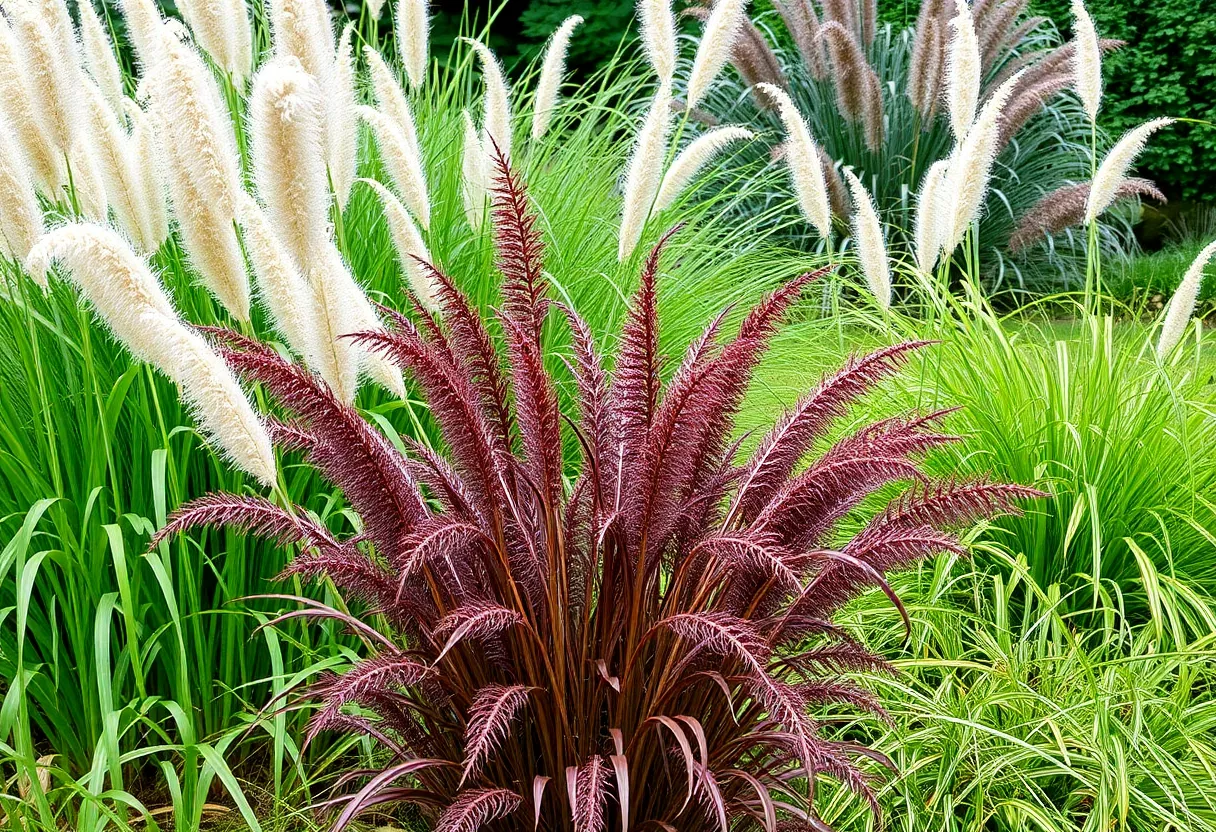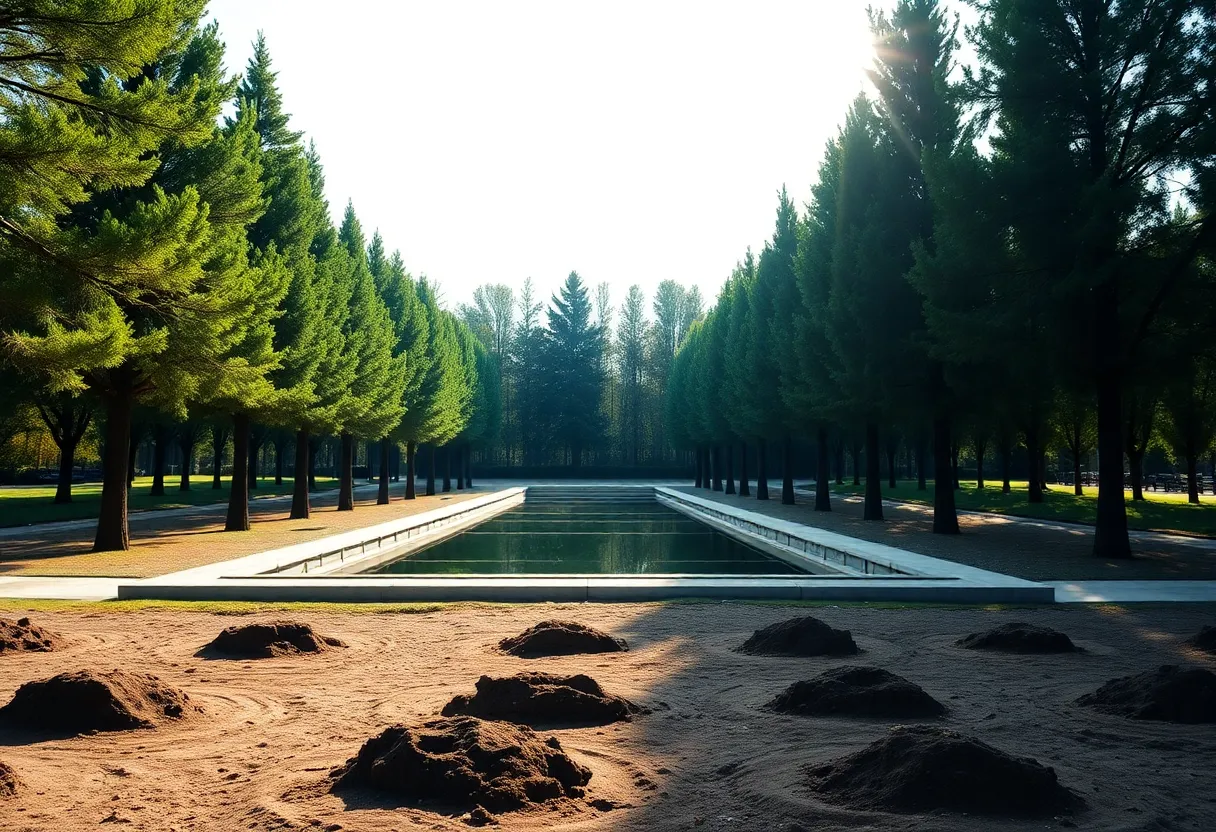How to Choose the Best Ornamental Grasses for Your Houston Landscape
Incorporating ornamental grasses into your Houston landscape elevates aesthetic appeal while providing ongoing visual interest. Houston’s warm climate, combined with diverse soil types, creates a unique environment for selecting grasses that flourish locally. Making informed choices involves understanding each grass’s characteristics, maintenance needs, and environmental benefits. This comprehensive guide aims to help you identify the most suitable ornamental grasses for your landscape, ensuring beauty, sustainability, and resilience.
Why Choose Ornamental Grasses for Houston?
Ornamental grasses are prized for their adaptability, low maintenance, and ability to add texture and movement. They thrive under Houston’s semi-humid, warm conditions and can tolerate droughts, especially when well-established. Their versatile nature makes them excellent for borders, ground covers, privacy screens, or focal points. Furthermore, these grasses support local biodiversity by attracting pollinators like butterflies and bees.
Key Factors in Selecting Ornamental Grasses
- Climate Compatibility: Choose varieties adapted to Houston’s summer heat and occasional cold snaps.
- Sunlight Requirements: Most Texas natives prefer full sun, but some thrive in partial shade.
- Soil Conditions: Ensure well-drained soil for optimal root health. Many grasses tolerate poor or sandy soils.
- Water Needs: Opt for drought-tolerant species to minimize irrigation, especially during hot months.
- Growth Habit & Size: Match mature size with available space to prevent overcrowding and facilitate maintenance.
- Invasiveness & Native Status: Prioritize native or non-invasive species to protect local ecosystems.
Top Ornamental Grasses Well-Suited for Houston
Gulf Muhly Grass
Muhlenbergia capillaris, known as Gulf Muhly, is a native Texas grass renowned for its delicate, feathery pink-purple plumes that appear in the fall. These plumes create a dynamic visual, enhancing gardens with soft color and texture. This grass prefers full sun and is highly drought-tolerant post-establishment. Growing 2–3 feet tall and wide, it forms dense clumps that require minimal maintenance. Occasional pruning of dead foliage in early spring encourages healthy growth.
Lindheimer’s Muhly Grass
Muhlenbergia lindheimeri, or Lindheimer’s Muhly, features upright blue-green foliage topped with soft tan seed heads during late summer. It reaches 3–5 feet in height, making it suitable for background planting or privacy screens. It thrives in full sun to partial shade, displaying excellent drought tolerance and low watering needs once established. Its versatility and robustness make it a popular choice for both residential and commercial landscaping.
Inland Sea Oats
Chasmanthium latifolium, or Inland Sea Oats, stands out with drooping seed heads resembling flattened oats, providing a relaxed, natural look. It can grow 2–4 feet tall and wide, preferring partial to full shade. Inland Sea Oats adapt well to Houston’s many soil types and moisture variations, making them fitting for woodland gardens and shaded ground covers. They are highly tolerant and require minimal care.
Little Bluestem
Schizachyrium scoparium, known as Little Bluestem, is a rugged native bunchgrass appreciated for its silver-blue foliage that transitions to rich rust hues in fall. It typically reaches 2–3 feet in height, ideal for naturalistic plantings and erosion control. It prefers full sun and low water, making it a sustainable option. This grass also provides habitat for skipper butterflies and supports other wildlife species.
Mexican Feather Grass
Nassella tenuissima, or Mexican Feather Grass, contributes a delicate, wispy texture that adds movement to dry gardens and xeriscapes. Growing 1–2 feet tall and wide, it flourishes in full sun and minimal water. Its soft appearance is eye-catching, especially in border plantings and containers. Caution is advised: in some Texas regions, this grass may be invasive. Consulting local extension services about its suitability is recommended.
Switchgrass
Panicum virgatum, or Switchgrass, is valued for its upright form and striking golden fall color. It reaches 3–6 feet tall and equally wide, thriving in full sun and tolerating low to moderate water once established. Its adaptability makes it suitable for rain gardens, wildlife habitats, and protective windbreaks. Switchgrass also supports native pollinators and bird species.
Sideoats Grama
Bouteloua curtipendula, called Sideoats Grama, features distinctive oat-like seed heads that hang from one side of the stem. Growing 1–2 feet in height, it is well-suited for native ornamental landscapes, meadows, and slopes. This grass prefers full sun and needs minimal watering. Its aesthetic appeal and ecological value make it a practical and attractive addition.
Zebra Grass
Miscanthus sinensis ‘Zebrinus’, or Zebra Grass, stands out with horizontally banded, golden-striped leaves, creating a dramatic focal point. It can reach heights of 5–7 feet and width similar, thriving in full sun with moderate water. Its bold appearance works effectively in contemporary gardens. However, pruning in winter may be necessary to preserve its striking look and prevent pest issues.
Additional Considerations for Planting Ornamental Grasses in Houston
- Soil Preparation: Prioritize well-drained soils to prevent root rot. Amend heavy or clay soils as needed.
- Watering Strategies: Deep, infrequent watering encourages deeper root systems and drought resilience.
- Spacing & Placement: Allow space for mature growth and good air circulation to minimize disease.
- Pruning & Maintenance: Remove dead or damaged foliage in late winter or early spring to promote vigorous growth.
- Invasiveness & Native Status: Use native or well-behaved species, and consult local resources to avoid invasive risks.
Conclusion
By carefully selecting ornamental grasses tailored to Houston’s climate and soil conditions, you can craft a landscape that is sustainable, visually captivating, and alive with movement. Native grasses like Gulf Muhly and Little Bluestem offer resilient, low-maintenance options, while non-native varieties such as Zebra Grass can provide bold accents when chosen thoughtfully. Always consider growth habits, environmental benefits, and maintenance needs to ensure your landscape remains vibrant and healthy over time.
Frequently Asked Questions
What are the best native grasses for Houston landscapes?
Excellent native options include Gulf Muhly, Little Bluestem, Sideoats Grama, and Inland Sea Oats. These grasses are well-adapted to local conditions, require low maintenance, and support native wildlife.
Are ornamental grasses invasive in Houston?
Most native grasses are not invasive. However, some non-native species like Mexican Feather Grass can spread aggressively in certain areas. It is advisable to consult local extension services before planting non-native grasses.
How much maintenance do ornamental grasses require?
Once established, most grasses need minimal maintenance. Regular pruning to remove dead foliage in late winter or early spring encourages healthy growth. Watering should be deep but infrequent, especially during drought periods.
Can ornamental grasses help with erosion control?
Yes, grasses like Little Bluestem and Sideoats Grama establish strong root systems that stabilize soil on slopes and prevent erosion, making them suitable for hillside gardens and erosion-prone areas.
Key Features of Houston-Appropriate Ornamental Grasses
| Grass Name | Height & Width | Sunlight | Water Needs | Notable Features |
|---|---|---|---|---|
| Gulf Muhly | 2–3 ft tall/wide | Full sun | Drought-tolerant | Pink-purple plumes in fall |
| Lindheimer’s Muhly | 3–5 ft tall | Full/partial shade | Low to moderate | Upright blue-green foliage |
| Inland Sea Oats | 2–4 ft | Partial/full shade | Moderate | Drooping seed heads |
| Little Bluestem | 2–3 ft | Full sun | Low | Color-changing in fall |
| Mexican Feather Grass | 1–2 ft | Full sun | Very low | Delicate, wispy texture |
| Switchgrass | 3–6 ft | Full sun | Low to moderate | Golden fall color |
| Sideoats Grama | 1–2 ft | Full sun | Low | Oat-like seed heads |
| Zebra Grass | 5–7 ft | Full sun | Moderate | Striking striped foliage |
Author: STAFF HERE HOUSTON TX WRITER
The HOUSTON STAFF WRITER represents the experienced team at HEREHouston.com, your go-to source for actionable local news and information in Houston, Harris County, and beyond. Specializing in "news you can use," we cover essential topics like product reviews for personal and business needs, local business directories, politics, real estate trends, neighborhood insights, and state news affecting the area—with deep expertise drawn from years of dedicated reporting and strong community input, including local press releases and business updates. We deliver top reporting on high-value events such as Houston Livestock Show and Rodeo, Art Car Parade, and Chevron Houston Marathon. Our coverage extends to key organizations like the Greater Houston Partnership and Houston Area Urban League, plus leading businesses in energy and healthcare that power the local economy such as ExxonMobil, Schlumberger, and Houston Methodist. As part of the broader HERE network, including HEREAustinTX.com, HERECollegeStation.com, HEREDallas.com, and HERESanAntonio.com, we provide comprehensive, credible insights into Texas's dynamic landscape.





